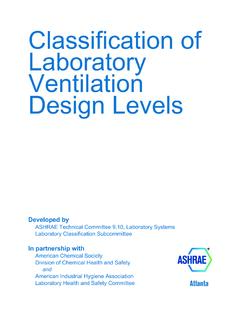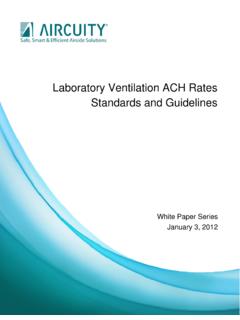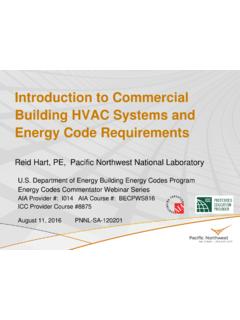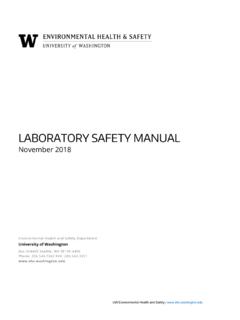Transcription of Voluntary Guidelines for Methamphetamine Laboratory …
1 REVISED EDITION. REVISED EDITION. MARCH 2013. MARCH 2013. United UnitedStates States Environmental EnvironmentalProtection Protection Agency Agency Voluntary Guidelines for Voluntary Methamphetamine Laboratory Methamphetamine Laboratory Cleanup Cleanup Contents Introduction.. 3. Background .. 3. Purpose and Scope.. 4. Methodology.. 5. Potential for Future Research.. 6. How to Use this Document.. 6. Remediation Standards .. 7. Remediation Sequence and Techniques.. 8. Overview of Remediation Sequence .. 8. Hiring a Contractor .. 9. ventilation .. 9. Worker Safety and Health.. 9. Preliminary Assessment.
2 10. Pre-Remediation Sampling.. 11. Cleanup Plan.. 12. Removal of Contaminated Materials.. 12. Waste Characterization and Disposal Procedures.. 13. High Efficiency Particulate Air (HEPA) Vacuuming.. 13. Initial Wash .. 14. Heating, ventilation and Air Conditioning (HVAC).. 14. Detergent-Water Solution Washing.. 15. Post-Remediation Sampling .. 16. Encapsulation .. 16. Plumbing.. 17. Sewer/Septic.. 17. Outdoor Remediation .. 18. Final Report.. 18. Item- and Material-Specific Best Practices.. 19. Walls.. 19. Ceilings.. 19. Floors .. 19. Kitchen Countertops .. 20. Concrete, Cement and Brick.. 20.
3 Appliances.. 20. Wood.. 21. Windows .. 21. EPA Voluntary Guidelines for Methamphetamine Laboratory Cleanup 1. Electrical Fixtures, Outlets and Switch Plate Covers.. 21. Dishes, Flatware and Other Hard Non-Porous Household Goods.. 21. Toys and Other Children's Items .. 21. Carpets.. 21. Clothing and Other Fabrics.. 22. Leather or Fabric Upholstered Furniture .. 22. Mattresses.. 22. Paper Items/Books .. 22. Mobile Residences .. 22. Potential Sampling Constituents, Theory and Methods.. 23. Sampling Constituents.. 23. Sampling Theory.. 24. Wipe Sampling Methods.. 25. Microvacuum Sampling Methods.
4 26. Other Emerging Sampling Methods .. 26. Quality Assurance/Quality Control (QA/QC) .. 26. Endnotes.. 27. Other References.. 28. Key Contributors.. 29. Appendix A: Primary Methods of Production and Associated Hazards.. 30. Appendix B: Costs Associated with Meth Lab Cleanup .. 31. Appendix C: Properties of Chemicals Associated with Methamphetamine .. 32. Appendix D: State Resources .. 41. Appendix E: Acronyms.. 44. 2 EPA Voluntary Guidelines for Methamphetamine Laboratory Cleanup Introduction Background The production and use of Methamphetamine (meth). across the United States continues to pose considerable challenges to our nation.
5 Meth is easy to make, is highly addictive and its production and use can have serious impacts on both human health and the environment. Despite a decline in domestic meth production in recent years, vigilance is warranted not only because of the destructive nature of meth itself, but also due to the significant environmental hazards meth laboratories (labs) generate. In December 2007, the Methamphetamine Remediation Our nation first demonstrated its commitment to Research Act (Public Law 110-143) was passed, which better understand the hazards associated with meth directed EPA to establish Voluntary Guidelines for the labs in March 1990, when the Joint Federal Task Force remediation of former meth labs based on the best (Task Force) published the Guidelines for the Cleanup currently available scientific knowledge.
6 This document, of Clandestine Drug Laboratories (commonly referred to in addition to new research, will serve to meet both as the Redbook). The Task Force was created as a result the Synthetic Strategy's and the Methamphetamine of Section 2405 of the Anti-Drug Abuse Act of 1988. Remediation Research Act's goals of improving our (Public Law 100-690) and included representatives national understanding of identifying the point at which from the Drug Enforcement Administration (DEA), former Methamphetamine laboratories become clean the Environmental Protection Agency (EPA) and enough to inhabit again.
7 2. the Coast Guard (USCG). The Task Force's charge was to issue Guidelines to assist state and local officials conducting clandestine Laboratory cleanups. The Redbook, updated in 2005, presents national Guidelines EPA's Local Governments Reimbursement for safely approaching and securing meth lab sites for first responders and other officials with immediate Program need to enter the site. The Redbook also addresses at In the event of a release (or threatened release) of hazardous length the gross removal of hazardous chemicals and substances, EPA may reimburse local governments for expenses chemical wastes found in former meth labs.
8 Whereas the related to the release and associated emergency response Redbook focuses primarily on procedures related to first measures. The Local Governments Reimbursement (LGR) Program provides a safety net of up to $25,000 per incident to local entry and gross removal of meth-related chemicals, this governments that do not have funds available to pay for response document addresses remediation (the cleanup of residual actions. contamination after gross removal has occurred), which is necessary to allow unrestricted future use of the former Under the EPA LGR Program, costs associated with the gross meth lab.
9 Removal of meth labs and their related wastes may be eligible for reimbursement. These costs may include overtime wages related In 2006, the White House Office of National Drug Control to hours spent securing the site or performing decontamination, Policy (ONDCP) published the Synthetic Drug Control costs for equipment purchased specifically for the response and Strategy: A Focus on Methamphetamine and Prescription contractor cleanup costs incurred by the local government for gross Drug Abuse (Synthetics Strategy) as a companion to the removal. However, costs related to long-term remediation actions National Drug Control Strategy.
10 The Synthetics Strategy as described in these Voluntary Guidelines ( , hiring a remediation acknowledges that, compared to first responder issues, contractor, conducting pre- and/or post-remediation sampling, developing a remediation cleanup plan and outdoor remediation) are a more complicated and less understood area of science generally not eligible for reimbursement under the LGR Program. is the optimal set and sequencing of response actions at former meth lab sites that may possess residual chemical contamination. 1 Thus, the Synthetics Strategy tasked EPA For more information, please visit the EPA LGR website: with identifying best practices related to the remediation of former meth labs.














